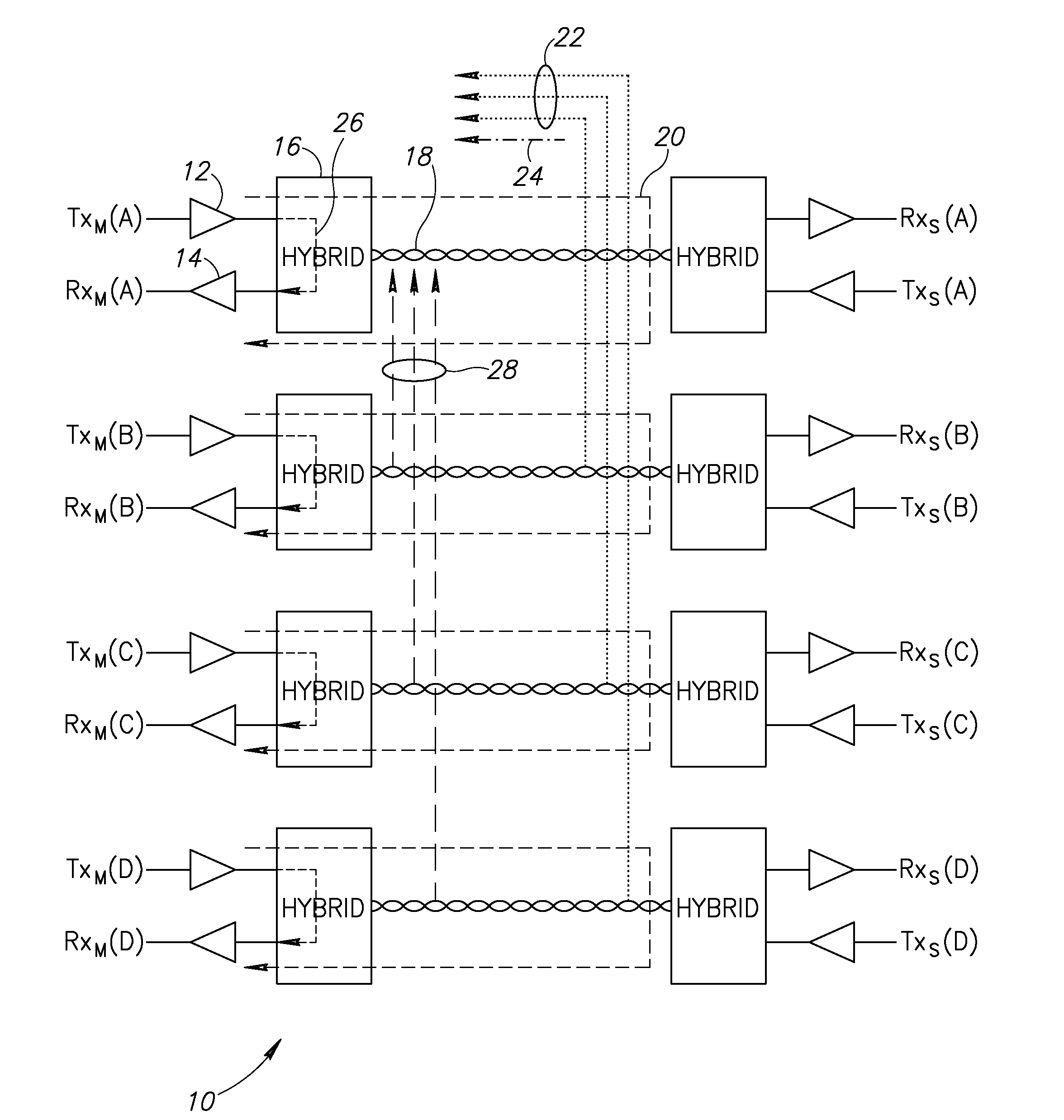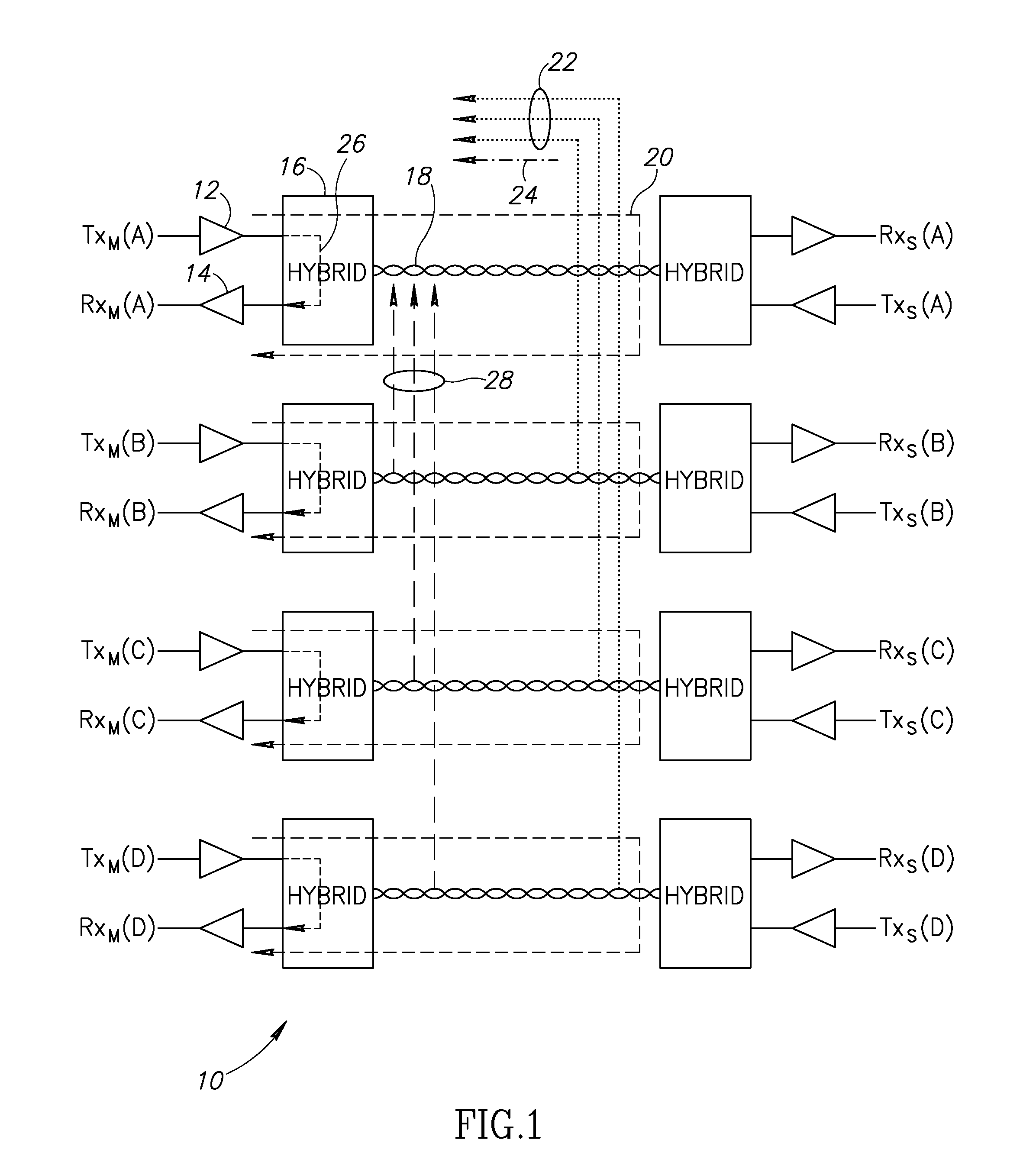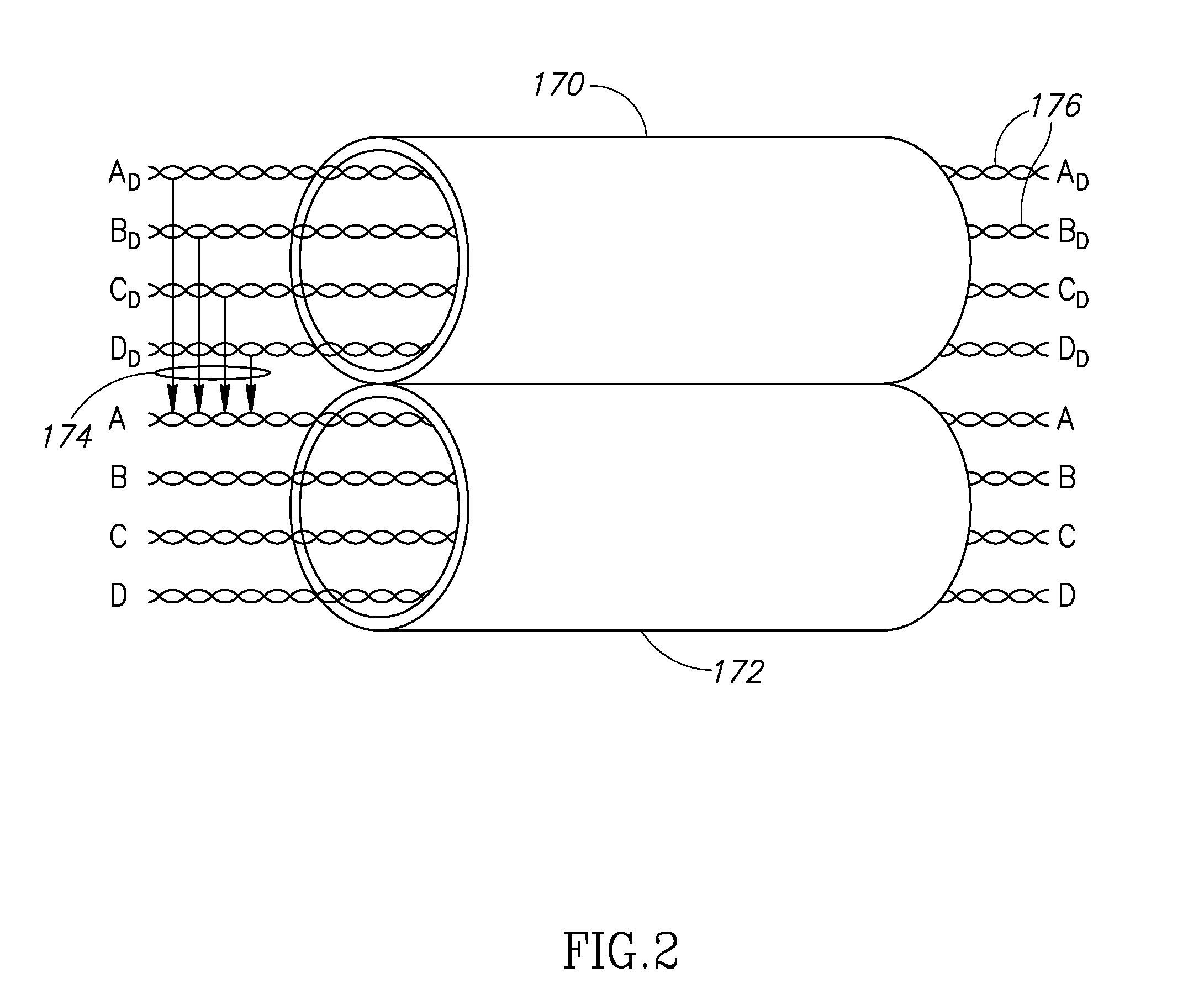Far-end crosstalk (FEXT) canceller
a far-end crosstalk and canceller technology, applied in the field of data communication, can solve problems such as fext noise, measured noise in actuality, and common ethernet network problems, and achieve the effect of reducing the number of fext nois
- Summary
- Abstract
- Description
- Claims
- Application Information
AI Technical Summary
Benefits of technology
Problems solved by technology
Method used
Image
Examples
first embodiment
[0074]A block diagram illustrating the FEXT canceller of the present invention employing linear equalization is shown in FIG. 8. In this embodiment the circuit, generally referenced 120, implements linear equalization. Two channels are shown including the channel of interest and one of the other three channels that generate FEXT interference. The same principles apply to the remaining two channels and are not shown for clarity sake. The channel of interest is shown as the lower path and comprises FFE 138, FEXT interference detection and estimation block 136, NEXT canceller 134, echo canceller 144, adder 140, Viterbi decoder 142, DFE 146 and timing block 148. The FEXT interference generating channel is shown as the upper path and comprises FFE 122, NEXT canceller 124, echo canceller 126, adder 123, Viterbi decoder 130, DFE 128 and timing block 132.
[0075]In operation, the linear FEXT cancellation block estimates the level of the FEXT interference using linear equalization techniques d...
second embodiment
[0076]A block diagram illustrating the FEXT canceller of the present invention employing linear equalization is shown in FIG. 9. In this embodiment, the circuit, generally referenced 150, implements linear equalization as well. Two channels are shown including the channel of interest and one of the other three channels that generate FEXT interference. The same principles apply to the remaining two channels and are not shown for clarity sake. The channel of interest is shown as the lower path and comprises FFE 160, FEXT interference detection and estimation block 158, NEXT canceller 159, echo canceller 166, adders 163, 164, delay block 162, Viterbi decoder 165, DFE 167 and timing block 168. The FEXT interference generating channel is shown as the upper path and comprises FFE 152, NEXT canceller 161, echo canceller 156, adders 169, 154, delay block 153, Viterbi decoder 130, DFE 155 and timing block 157.
[0077]In operation, the linear FEXT cancellation block estimates the level of the F...
third embodiment
[0079]A block diagram illustrating the FEXT canceller of the present invention employing a backward architecture is shown in FIG. 10. In this embodiment, the circuit, generally referenced 180, implements backwards FEXT cancellation. Two channels are shown including the channel of interest and one of the other three channels that generate FEXT interference. The same principles apply to the remaining two channels and are not shown for clarity sake. The channel of interest is shown as the lower path and comprises FFE 200, adder 196, slicer 195, auxiliary DFE 197, FEXT interference detection and estimation block 198, NEXT canceller 199, echo canceller 204, adders 201, 203, delay block 202, Viterbi decoder 209, DFE (for taps 4-31) 208 and timing block 206. The FEXT interference generating channel is shown as the upper path and comprises FFE 182, NEXT canceller 184, echo canceller 192, adders 183, 188, delay block 186, Viterbi decoder 190, DFE (for taps 4-31) 193 and timing block 194.
[008...
PUM
 Login to View More
Login to View More Abstract
Description
Claims
Application Information
 Login to View More
Login to View More - R&D
- Intellectual Property
- Life Sciences
- Materials
- Tech Scout
- Unparalleled Data Quality
- Higher Quality Content
- 60% Fewer Hallucinations
Browse by: Latest US Patents, China's latest patents, Technical Efficacy Thesaurus, Application Domain, Technology Topic, Popular Technical Reports.
© 2025 PatSnap. All rights reserved.Legal|Privacy policy|Modern Slavery Act Transparency Statement|Sitemap|About US| Contact US: help@patsnap.com



